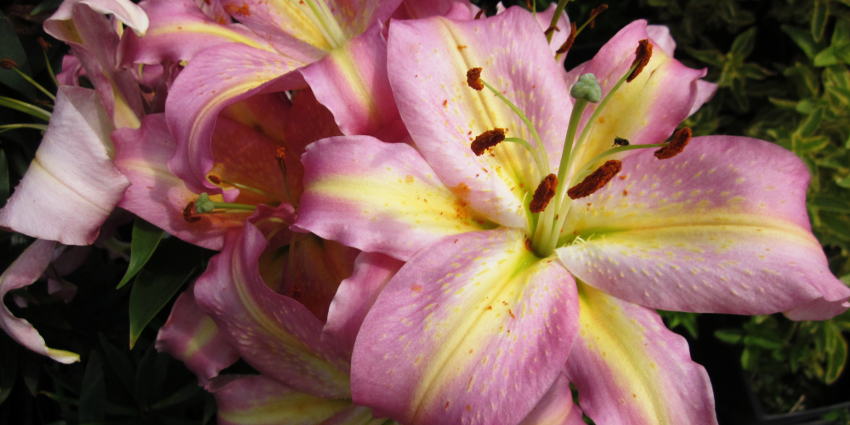Every spring we start to get the gardening itch. Spring bulbs are a great way to get a head start and scratch that itch. But calling them "bulbs" really isn't quite right.
The first misdemeanour is the name. In the gardening world, bulbs are named by the time they are planted, not when they flower. Spring bulbs are planted in the spring to flower in the summer. Fall bulbs are planted in the fall to flower the following spring.
The second issue is the term "bulb". In the case of spring bulbs, the vast majority of them are not bulbs. They're plants that are available as corms, roots, or some other form of dormant plant storage devices. Not really an issue, but it's worth the clarification for those thinking in technical terms.
Spring bulbs include a large diversity of bulbs types. Begonias are usually the first to arrive since they are quite slow to start. Calla Lilies, Canna Lilies, Caladiums, Elephant Ears, traditional lilies like Asiatic and Stargazers, and Trilliums are all available in the spring for early planting. Of course the most popular spring bulbs (which aren't bulbs, of course) are the Dahlias and Gladiolus. In general, most of these spring bulbs can't take the cold which is why you plant them in the spring rather than the fall. If you leave these plants in your garden when freeze-up comes, your plant usually turns to much. Of course there are some exceptions, like the true Lilies, Trilliums, and sometimes Anemones, but don't always count on that.
When planting spring bulbs, they really should be started indoors. Find a nice sized pot and fill it with soil. If you plan to plant them in your garden later, you can get away with a smaller pot. Either that, or choose a nice big container with heavier soil and leave your plant in the pot and just move it outdoors to it's new home when there's no more risk of frost. Some plants, like the giant dinnerplate dahlias can have massive flowers so you may need to be prepared to support the plant so keep that in mind when selecting your pot. It's also worth knowing that there are quite a few plants available as spring bulbs that are hard or impossible to find as plants during the summer. Dinnerplate Dahlias and Gladiolus are two that are quite rare to find as growing plants. If you want to dry growing a plant with a flower literally the size of a dinnerplate, then your only option is to plant some spring bulbs.
Caring for your spring bulbs isn't really much different than any other annual planter (at least the tender ones). Put your planter in sun or shade as appropriate for the plant, and keep it watered and fed. When it starts to get cool in the fall, you have a decision to make. You can either leave the plant to freeze and treat it like an annual. This does make some avid gardeners cringe, but it can be easier than storing your bulbs. To store your bulbs, cut the plants back before it freezes completely. Lift the bulbs and remove any excess green growth. Leave it out in a cool place for a little while to dry somewhat, then store it in a cool dry place in sawdust or dry peat moss until planting time in the spring. Some people have great luck keeping their bulbs and others don't.
Regardless if you want to overwinter your bulbs or just enjoy them as an annual in your garden, spring bulbs really are a great way to scratch the early spring gardening itch. Give it a try - you'll never know unless you try.

